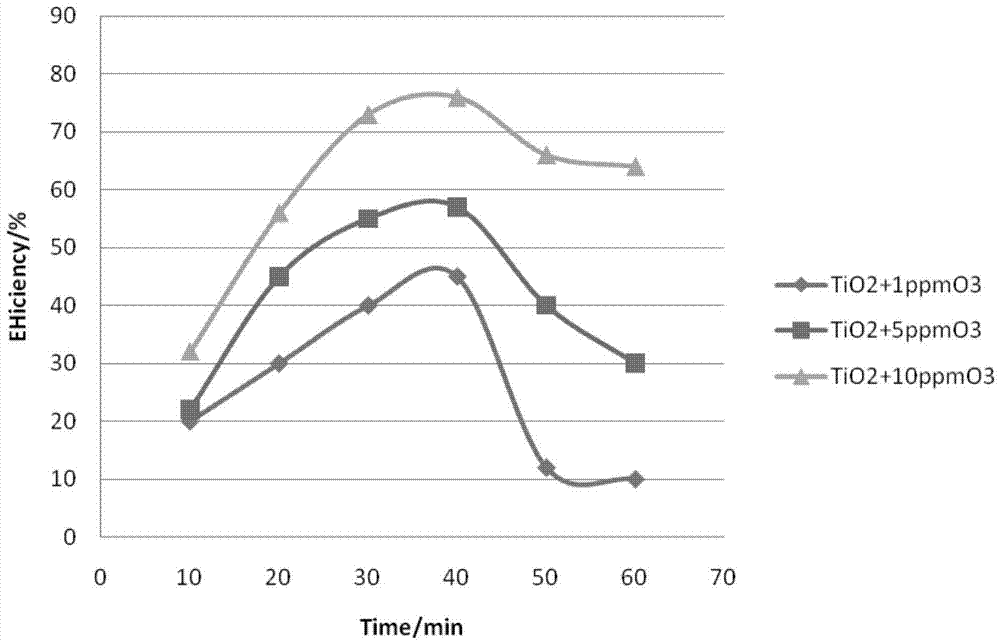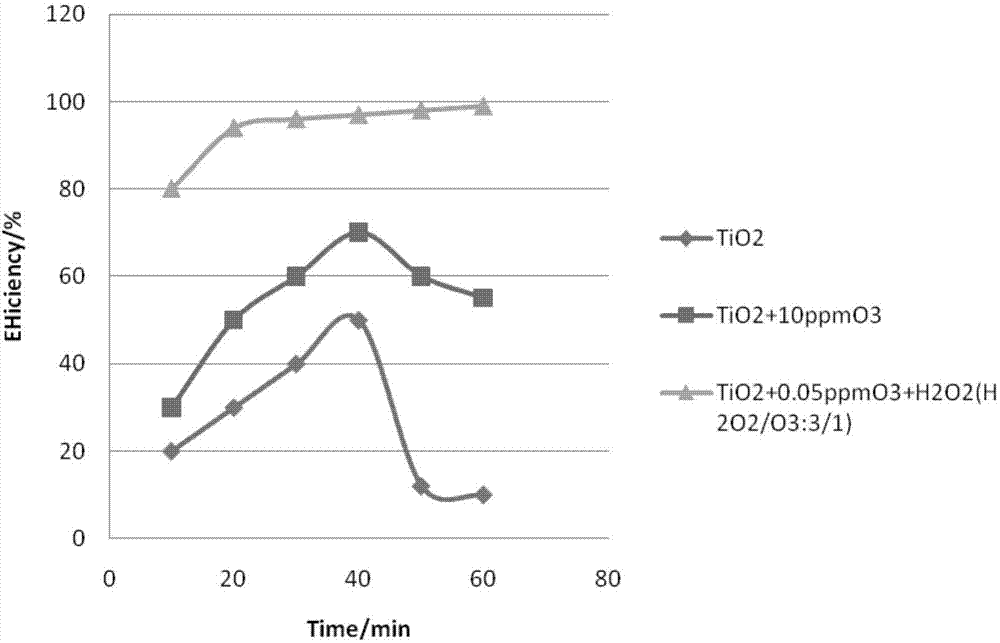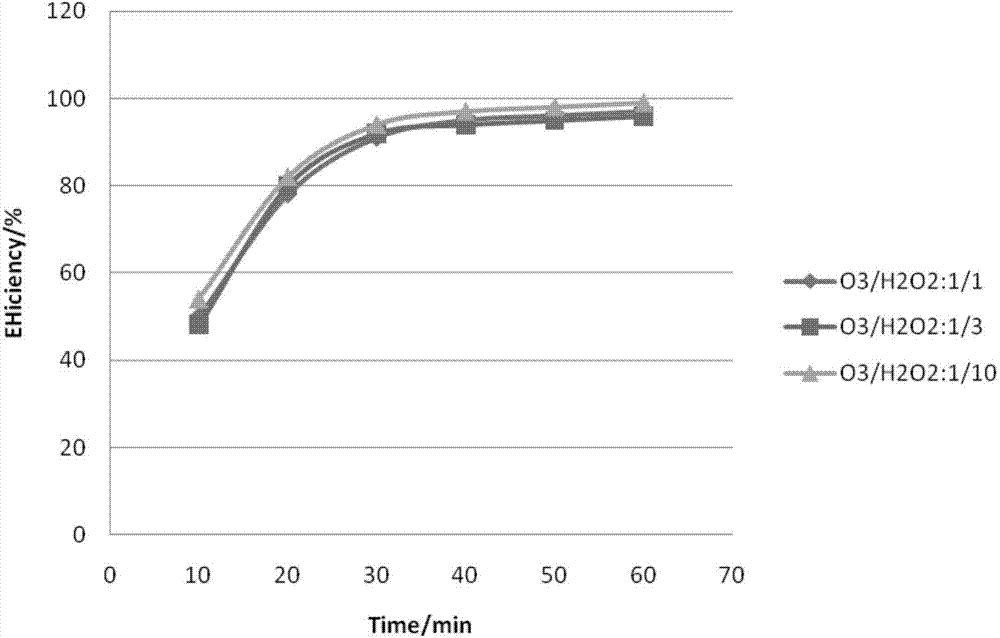Method and device for purifying indoor harmful volatile organic compounds
A technology of volatile organic compounds and air purification devices, which is applied in the field of air purification, can solve problems such as catalytic decomposition, deactivation, and catalyst deactivation of pollutants that hinder target purification, and achieve the effects of rapid recovery of catalyst activity, continuous removal, and efficient removal
- Summary
- Abstract
- Description
- Claims
- Application Information
AI Technical Summary
Problems solved by technology
Method used
Image
Examples
Embodiment 1
[0044] Such as Picture 8 As shown, an air purification device for indoor harmful volatile organic compounds purification, comprising: a hollow cylinder 1 sealed at both upper and lower ends, the inner wall of the hollow cylinder 1 is attached with a net-shaped catalyst carrier 2 and the carrier 2 Coated with titanium dioxide (TiO 2 ) Nano catalyst, the hollow cylinder 1 is also provided with an ultraviolet lamp 3; the side of the upper end of the hollow cylinder 1 is provided with an air inlet 4, and the lower end of the cylinder corresponds to the other side of the air inlet 4 with an air outlet 5; Outside the hollow cylinder 1 is provided an ozone generator 6 and a hydrogen peroxide gas generator 7; an exhaust fan is provided at the air outlet 5. In use, the ozone and hydrogen peroxide gas generated by the ozone generator 6 and the hydrogen peroxide gas generator 7 enter the hollow cylinder 1 through the air inlet 4, so that the The closed space formed by the hollow cylinder...
Embodiment 2
[0048] The difference between this embodiment and the first embodiment is that the concentration of the ozone and hydrogen peroxide is different, and the concentration of the ozone is 0.03 ppm; moreover, different purification can be obtained by changing the composition ratio of ozone and hydrogen peroxide The curve of the efficiency of formaldehyde over time. Such as image 3 As shown, the efficiency of purifying formaldehyde obtained by using the air purification device described in Example 1 under the condition that the mass volume concentration ratios of ozone and hydrogen peroxide are 1:1, 1:3, and 1:10, respectively Comparison chart over time. It can be seen from the figure that the mass concentration ratio of ozone and hydrogen peroxide is in the range of 1:1 to 1:10, and the efficiency of purifying formaldehyde (the range of change over time is about 45% to 99%) is very good.
Embodiment 3
[0050] Such as Picture 9 As shown, an air purification device for indoor harmful volatile organic compounds purification, comprising: a hollow cylinder 1 sealed at both upper and lower ends, the inner wall of the hollow cylinder 1 is attached with a net-shaped catalyst carrier 2 and the carrier 2 Coated with titanium dioxide (TiO 2 ) Nano catalyst, the hollow cylinder 1 is also provided with an ultraviolet lamp 3; the side of the lower end of the hollow cylinder 1 is provided with an air inlet 4, and the upper end of the cylinder is provided with an air outlet on the other side corresponding to the air inlet 4 5; In the lower part of the hollow cylinder 1 is provided with an ozone generator 6 and a hydrogen peroxide gas generator 7; a blower is provided at the air inlet 4. In use, the ozone and hydrogen peroxide gas generated by the ozone generator 6 and the hydrogen peroxide gas generator 7 make the enclosed space formed by the hollow cylinder 1 filled with ozone and hydrogen ...
PUM
 Login to View More
Login to View More Abstract
Description
Claims
Application Information
 Login to View More
Login to View More - R&D
- Intellectual Property
- Life Sciences
- Materials
- Tech Scout
- Unparalleled Data Quality
- Higher Quality Content
- 60% Fewer Hallucinations
Browse by: Latest US Patents, China's latest patents, Technical Efficacy Thesaurus, Application Domain, Technology Topic, Popular Technical Reports.
© 2025 PatSnap. All rights reserved.Legal|Privacy policy|Modern Slavery Act Transparency Statement|Sitemap|About US| Contact US: help@patsnap.com



